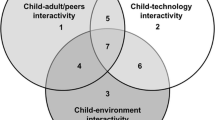Abstract
The Flickr Commons was created as a forum for institutions to share their rich photographic collections with the emerging Web 2.0 audience of Flickr; the Smithsonian Institution was the fourth member of the Commons. The Smithsonian effort was a direct collaborative effort of the libraries, archives, museums, and information technology staff that generated new pathways for collaboration between these units. As the world’s largest museum complex, these Smithsonian units serve as a microcosm for collaboration in the information age. The Flickr Commons project provided insights into how the knowledge, skills, and abilities of libraries, archives, and museums (LAM) can converge in the Web 2.0 environment to provide collection access to new, and in some cases unknown, audiences. Simultaneously, by putting “LAM” content into an environment that allows for direct interaction by these audiences, the knowledge of the content for holding institutions is enriched. By exposing Smithsonian content within the Flickr environment, the Institution is learning what content is desired by the Web 2.0 world, how to bring crowd-sourcing into professionally curated collections, and how to bring diverse institutional skills together in a collaborative project.
Similar content being viewed by others
Notes
For example, see Rodrick Page, “What is a study about? Treemaps of taxa.” http://iphylo.blogspot.com/2008/11/what-is-study-about-treemaps-of-taxa.html. There are, however, some drawbacks that could be exploited in this use of unvetted tagging, see Chris Freeland, “New EOL Flickr Group”. http://blog.chrisfreeland.com/2008/09/new-eol-flickr-group.html.
Site use statistics from Alexa are available: http://www.alexa.com/data/details/traffic_details/wikipedia.org.
Harden’s argument has been rebutted in various disciplines (Husaina and Bhattacharyab 2004).
References
Chun S, Cherry R, Hiwiller D, Trant J, Wyman B (2006) Steve.museum: an ongoing experiment in social tagging, folksonomy, and museums. Museums and the Web 2006: Proceedings. http://www.archimuse.com/mw2006/papers/wyman/wyman.html
Edson M (2008) Imagining a smithsonian commons. Paper presented at the Gilbane Boston Conference, December 3, 2008. http://www.slideshare.net/edsonm/1232008-gilbane-conference-smithsonian-commons-for-external-presentation/
Flickr (2009) Flickr: API/discuss: machine tags. http://www.flickr.com/groups/api/discuss/72157594497877875/
Hardin G (1968) The tragedy of the commons. Science 162:1243–1248
Husaina Z, Bhattacharyab R (2004) Common pool resources and contextual factors: evolution of a fishermen’s cooperative in Calcutta. Ecol Economics 50(3–4):201–217
Lally AM, Dunford CE (2007) Using wikipedia to extend digital collections. D-Lib Magazine 13 (5/6): http://www.dlib.org/dlib/may07/lally/05lally.html
Springer M, Dulabahn B, Michel P, Natanson B, Reser D, Woodward D, Zinkham H (2008) For the common good: the library of congress Flickr pilot project. October 30, 2008. http://www.loc.gov/rr/print/flickr_report_final.pdf
Waibel G (2008) You’re more social than you think. Presentation at the GNCTPG annual meeting, Alameda Public Library. April 11, 2008
Zorich D, Waibel G, Erway R (2008) Beyond the silos of the LAMs: collaboration among libraries, archives and museums. Report produced by OCLC programs and research. http://www.oclc.org/programs/reports/2008-05.pdf
Acknowledgments
The authors would like to thank the staff in our respective library, archive, and museum units who made the Smithsonian Flickr Commons a success, particularly James Felley, Lauryn Guttenplan, Feng-Yueh Huang, Darren Milligan, Erin C. Rushing, Ann Speyer, Michael Tuttle, Ching-Hsien Wang, Susannah Wells, and Naxin Wu. Brett Lambert, a participant in the Alberta Smithsonian Internship Program (ASIP) from the School of Library and Information Studies, University of Alberta, provided invaluable assistance with the literature review and bibliographic citations. Smithsonian participation in the Flickr Commons, as well as the Commons itself would not be possible with out George Oates, formerly of Flickr, and her team at Flickr.
Author information
Authors and Affiliations
Corresponding author
Rights and permissions
About this article
Cite this article
Kalfatovic, M.R., Kapsalis, E., Spiess, K.P. et al. Smithsonian Team Flickr: a library, archives, and museums collaboration in web 2.0 space. Arch Sci 8, 267–277 (2008). https://doi.org/10.1007/s10502-009-9089-y
Received:
Accepted:
Published:
Issue Date:
DOI: https://doi.org/10.1007/s10502-009-9089-y




